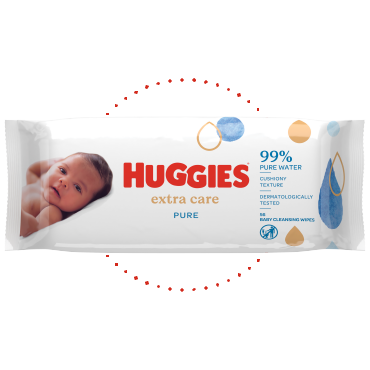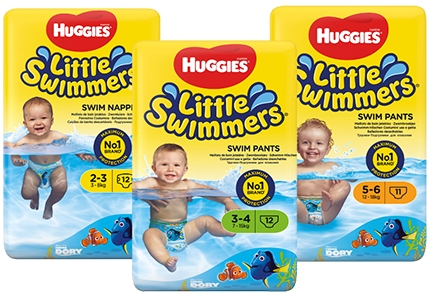Should my baby wear armbands?
In terms of being in the pool with your child, there are plenty of swimming aids for babies and young children available. However, the use of these is not universally recommended.
We spoke to Ali Beckman, Head Teacher and Technical Director at Puddle Ducks, a nationwide baby and child swim school who explains why her school doesn’t recommend them.
Swim aids can increase the risk of your child flipping in the water
Using swim aids such as inflatables, buoyancy seats and neck floats can increase the likelihood of your child flipping in the water. Not only will this be uncomfortable for your little one, but the float may also land on top of them, making it difficult for them to reach the surface.

They prevent your little one from developing their swimming technique
Puddle Ducks sessions don’t make use of armbands or water wings as teaching swimming and water safety as life skills is the priority. They also believe that developing a good swimming technique is hindered by wearing armbands.
Armbands require an adult to deflate them, removing the independence for the child - something which we focus on throughout our lessons. Also, if your child was to have an accident and fall into open water, they will not have armbands on.
Their experience in swimming lessons needs to be as realistic as possible, and avoiding armbands allows for this.

However, some parents do find baby inflatables a useful addition to their swimming kit, if only to give their arms a break for a short time! Just make sure your baby is always under close supervision and within easy reach.
Water safety is a core building block in our lesson plans and everything your child learns will, unbeknown to them, be teaching them vital life-saving skills.
Are baby neck floats safe?

There has been much controversy around the subject of neck floats for babies, and according to the experts we contacted, their use is not generally recommended.
The possibility of seams splitting, or sudden deflation of baby inflatables makes them a potentially serious hazard. There are also concerns that they may put undue strain on a baby’s neck and impede movement.
For a comprehensive look at the drawbacks of these devices, see the statement The Hidden Risks of Floating Neck Rings for Babies By Françoise Freedman, Founder of Birthlight and Shawn Tomlinson, Birthlight and Swimming Teachers’ Association Baby Swimming Tutor.
And of course, one of the perks for babies of being in the water with their parent or carer is skin-to-skin contact and the emotional benefits this bestows, something which this kind of flotation device deprives them of.

When should I use floating devices such as baby inflatables?
As the experts we spoke to reiterated, always remember that baby inflatables and floats are not a substitute for proper supervision. You should always have close contact with your baby in the water and they should always be within easy reach.
However, with the above in mind, you can use floating devices to sprinkle some fun on your swimming sessions, especially if you are using them under the guidance of professionals. Ali Beckman from Puddle Ducks agrees:
As always, when using any kind of flotation device, make sure they conform to British Safety Standards and are age appropriate.
What equipment should I take to help my baby swim?
Swimming – for anyone of any age – is an activity that takes a bit of forethought. Make sure you have all the things you need for a comfortable swim:
- Swimsuit
- Trunks or wetsuit for yourself and your child
- Towels (poncho towels are great for babies and kids)
- Spare clothes
- Nappies
- Drinks and snacks (for after)
For more tips on what our parents have found most useful for swimming outings, check out our guide to the baby swim bag essentials you should always pack.
Swim nappies are top of the list and most pools will not allow babies and young toddlers in the water without them. Huggies® Little Swimmers® swim pants come in a range of sizes and are designed with a unique absorbent material that won't swell on contact with water. They also have stretchy side panels to give your baby freedom of movement in the water and leak guards that protect against accidents and leaks in the pool.
Take a dive into your next big parenting adventure
On your marks, get ready, play! Find a wealth of learning, playtime and adventure content to help your little one’s journey from crawling, to cruising and beyond.
Get top scores in the pool. Use our insightful expert opinions to make every trip to the pool a magic one. Conquer the swimming run with advice on what to pack and how to make the journey tear free.
Get ready to dive right in, and love every moment of your parenting journey.

Looking for some great deals, baby?
Sign up with Huggies® to get tips, advice and some cool deals too.



 your parenting partner
your parenting partner